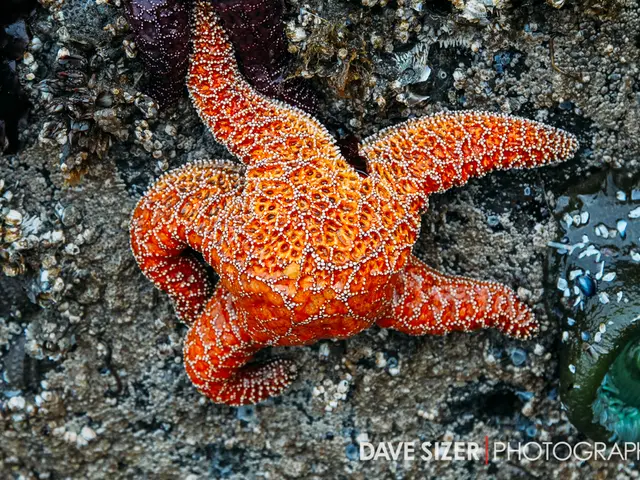Discovered in Mongolia: Ancient, Comprehensive Fossil of a Dome-headed Dinosaur, Remaining the Eldest Known
In the vast expanse of the Gobi Desert, a groundbreaking discovery has been made - the oldest and most complete fossil of a juvenile pachycephalosaur. This dinosaur, belonging to a previously unknown species named Zavacephale rinpoche, was unearthed by a team of researchers led by Tsogtbaatar Chinzorig from the Mongolian Academy of Sciences and Zanno.
The fossil, which dates back to 108 to 115 million years ago, was found in the Khuren Dukh formation within the Gobi Desert, Mongolia. This remarkable find is significant as it is approximately 15 million years older than previously discovered pachycephalosaur specimens, providing valuable insight into the evolution of these enigmatic dinosaurs.
The Zavacephale individual was at least 2 years old and about 3 feet long, much smaller than its later counterparts that could grow to about 14 feet long. One of the most intriguing aspects of this fossil is the thickened bone on top of the skull, a characteristic feature of pachycephalosaurs. The purpose of this dome on their skulls remains unclear, with scientists suggesting it may have been used for combat or to impress potential mates.
Previously, pachycephalosaur fossils were mostly limited to skulls. However, the Zavacephale fossil, being the most skeletally complete, offers more detail about the dinosaur's anatomy. Chinzorig from the National History Museum in London stated that the completeness of the fossil is important for understanding the development of the cranial dome in pachycephalosaurs.
The discovery of this older fossil does not repeat any of the previously mentioned facts about the Zavacephale fossil. Instead, it sheds light on what earlier pachycephalosaur species were like and how they changed over time. This finding is a significant step towards understanding the evolution of these fascinating creatures that roamed the Earth during the Cretaceous period.
Pachycephalosaurs, with their unique dome-shaped skulls, continue to captivate the imagination of palaeontologists and the public alike. The discovery of the Zavacephale fossil adds another piece to the puzzle, offering a glimpse into the past and the evolution of these enigmatic dinosaurs.
Read also:
- Parliamentary Meetings in the Federal Diet of Germany this Week
- A Meniscus Tear refers to a common knee injury that occurs when the meniscus, a crescent-shaped cartilage within the knee joint, becomes torn or damaged.
- Startupopportunities available at the European Health Congress; submissions accepted for potential collaborations
- Lockdowns fuel COVID-19 threat perception, according to recent research in the UK




